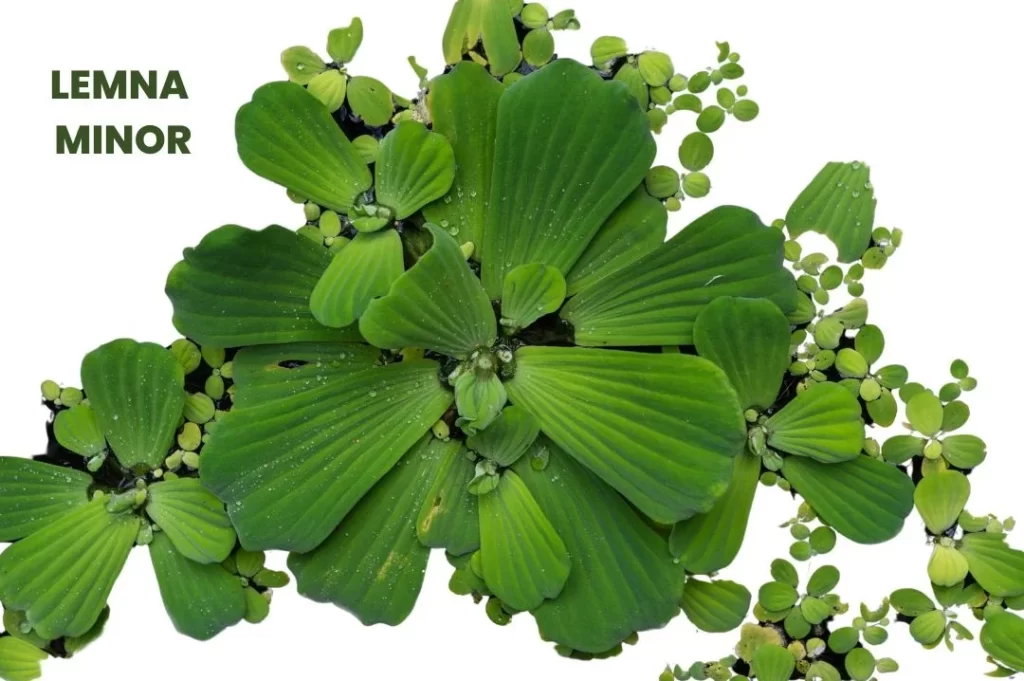Lemna Minor, commonly known as Duckweed, is a small aquatic plant belonging to the family Araceae.
It floats on the surface of still or slow-moving water and is often found in ponds, lakes, and marshes.
In homeopathy, Lemna Minor is recognized for its action as a catarrhal remedy, particularly affecting the respiratory and nasal systems.
It is especially useful for treating conditions like nasal obstruction, atrophic rhinitis, and asthma, particularly when these symptoms worsen in damp or wet weather.

Table of Contents
ToggleSOURCE INFORMATION
Scientific Classification
- Common Name: Duckweed
- Family: Araceae
- Genus: Lemna
- Species: L. Minor
- Synonyms: Common duckweed
Origin
- Duckweed is native to various regions worldwide, thriving in shallow waters with ample sunlight.
- It is one of the smallest flowering plants and can reproduce rapidly, often covering the surface of water bodies.
- Historically, it has been used in various traditional medicine practices for its potential health benefits.
DRUG PATHOGENESIS
- Lemna Minor acts primarily on the mucous membranes, particularly in the nasal passages and respiratory system.
- Its effects include alleviating nasal obstruction, reducing the symptoms of rhinitis, and addressing asthma triggered by nasal congestion.
- The remedy is particularly indicated when the symptoms are aggravated by damp weather.
DIATHESIS
- Lemna Minor is particularly effective for individuals with catarrhal conditions, characterized by excess mucus production and nasal congestion.
WHAT IS DIATHESIS IN HOMOEOPATHY?
TEMPERAMENTS
- It is especially beneficial for individuals who experience sensitivity to dampness, often feeling worse during rainy or humid conditions.
WHAT ARE TEMPERAMENTS IN HOMOEOPATHY?
KEY CHARACTERISTICS
- Nasal Symptoms: Prominent effects on the nostrils, leading to conditions like nasal polyps and atrophic rhinitis.
- Respiratory Symptoms: Useful in treating asthma, particularly when associated with nasal obstruction and worsened by moisture in the air.
- Digestive Symptoms: It can also influence the gastrointestinal tract, causing noisy diarrhea in some individuals.
DETAILED ORGAN SYMPTOMS
NOSE SYMPTOMS
- Putrid Smell: A foul odor emanating from the nasal passages may be present, indicating the presence of infection or inflammation.
- Loss of Smell: Anosmia, or the inability to perceive odours, is a common complaint.
- Crusts and Discharge: The patient may experience abundant muco-purulent discharge, often accompanied by post-nasal drip and pain extending from the nostrils to the ear.
- Oedema: Lemna Minor helps reduce nasal obstruction when associated with swelling of the turbinates.
MOUTH SYMPTOMS
- Putrid Taste: Patients often report a foul taste in the mouth upon waking, indicative of mucosal infection or poor oral hygiene.
- Dry Pharynx and Larynx: A dry sensation in the throat and larynx may accompany other respiratory symptoms.
ABDOMEN SYMPTOMS
- Noisy Diarrhoea: There may be a tendency toward noisy and frequent diarrhoea, indicating gastrointestinal irritation.
MODALITIES
- Worse: Symptoms are exacerbated in damp or rainy weather, especially during heavy rains, indicating a clear relationship between environmental conditions and symptom severity.
- Better: Conditions may improve in dry, warm weather, reducing the impact of dampness on respiratory symptoms.
WHAT ARE MODALITIES IN HOMOEOPATHY?
RELATIONSHIP WITH OTHER DRUGS
Compare,
- Dulcamara (Dulc): Known for its efficacy in damp environments and conditions exacerbated by humidity.
- Calcarea (Calc): Useful for similar catarrhal symptoms, especially in individuals sensitive to moisture.
- Teucrium, Calendula, and Natrum Sulphuricum: Other remedies that address catarrhal conditions and related symptoms.
DOSE
- Preparation: Lemna Minor is typically used in potencies ranging from the third to thirtieth potency, allowing for a range of effects based on individual needs.
- Administration: The appropriate potency should be selected based on symptom severity and the patient’s overall health status.
Frequently Asked Questions (FAQs)
What conditions does Lemna Minor treat?
- Lemna Minor is primarily used for nasal and respiratory conditions, such as nasal polyps, atrophic rhinitis, and asthma associated with nasal obstruction.
How does Lemna Minor work?
- This remedy works by reducing nasal obstruction, alleviating excessive mucus production, and addressing symptoms related to damp weather.
Are there any side effects of Lemna Minor?
- Lemna Minor is generally safe when used appropriately in homeopathic potencies. However, individuals should consult a homeopathic practitioner for personalized guidance.
Who should consider taking Lemna Minor?
- Individuals with chronic nasal congestion, atrophic rhinitis, or asthma exacerbated by humidity may benefit from this remedy.
How should Lemna Minor be administered?
- Doses should be tailored to the individual’s symptoms and health needs, ideally under the supervision of a qualified homeopath.
Glossary of Difficult Words
- Catarrhal: Relating to or characterized by an excess of mucus, often leading to inflammation of the mucous membranes.
- Atrophic Rhinitis: A condition characterized by the thinning of the nasal mucosa, leading to dry nasal passages and crusting.
- Anosmia: The loss of the sense of smell.
- Muco-purulent: A type of discharge that contains both mucus and pus, indicating infection or inflammation.
- Oedema: Swelling caused by excess fluid trapped in the body’s tissues.
Lemna Minor serves as an important remedy in homeopathy, especially for individuals suffering from respiratory and nasal conditions aggravated by damp environmental conditions.
Its multifaceted effects on the mucous membranes underscore its utility in alleviating catarrhal symptoms and improving overall respiratory function.
As with any homeopathic treatment, consultation with a qualified practitioner is recommended to ensure safe and effective use.
